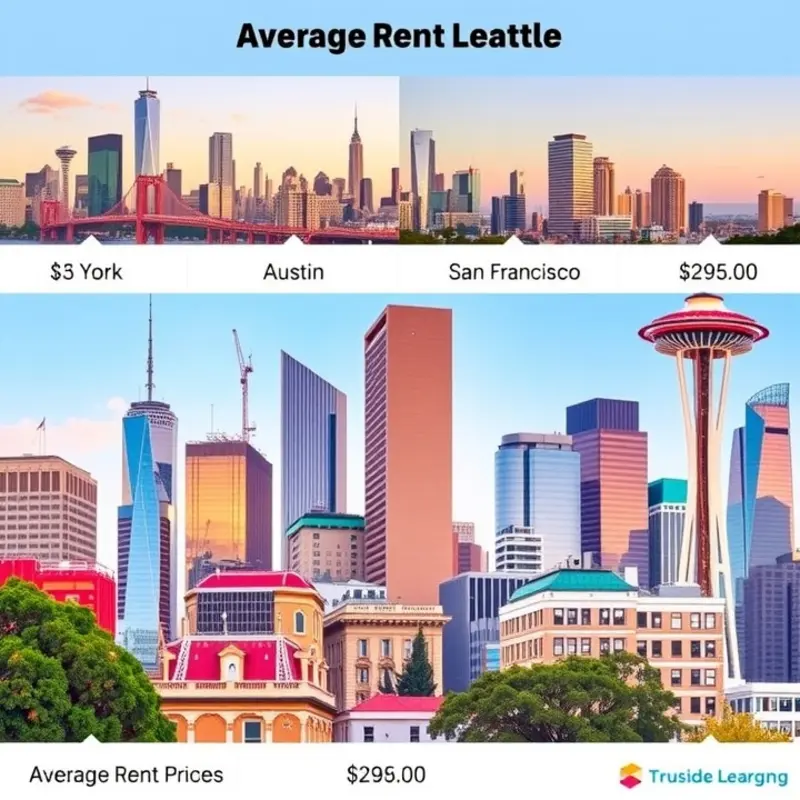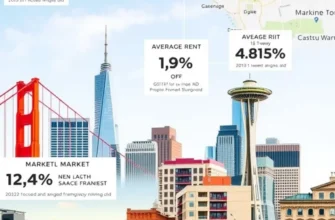Relocating to a new city can be both exciting and daunting. For young professionals, students, couples, and families seeking rental accommodations in highly sought-after areas, understanding the local rental market is crucial. High-demand cities such as New York, San Francisco, and Austin often have fierce competition and rising rents, making it essential to approach your search with a solid strategy. Whether you’re starting a new job, pursuing education, or simply seeking a fresh experience, knowing the key insights and tips can make a world of difference in securing your ideal rental. Here, we delve into practical advice tailored for a variety of renters, ensuring you feel confident and informed as you navigate this important transition. From exploring neighborhoods to perfecting your rental application, these tips will help you secure a home that suits your lifestyle and budget.
Understanding the Market: Insights by City

New York City is known for its dynamic rental market, where high demand meets limited supply. For young professionals and students, neighborhoods like the Lower East Side and Williamsburg offer vibrant social scenes. However, families might find more space and schools in areas like Park Slope or the Upper West Side. Expect to pay an average rent of around $3,500 for a one-bedroom in Manhattan, with Brooklyn slightly more affordable. To navigate this, consider off-peak moving seasons to potentially save on rent and broker fees.
In San Francisco, the tech boom continues to influence rental trends, creating fierce competition. Young professionals gravitate towards SoMa for its proximity to startups, while students might prefer the Mission District for its eclectic vibe and food scene. Families often settle in Noe Valley, known for its parks and family-friendly amenities. With the average one-bedroom unit costing around $3,700, co-living spaces are becoming popular as a cost-effective alternative for those willing to share.
Austin is experiencing rapid growth, attracting tech workers and students alike, particularly near the University of Texas campus. Neighborhoods like East Austin offer cultural richness and are popular among young professionals seeking an artistic community. Families are frequently drawn to suburbs like Round Rock or West Lake Hills, which offer good schools and more space. With Austin’s average rent for a one-bedroom hovering around $1,500, it’s crucial to act quickly when a suitable place appears, as listings tend to be snatched up rapidly.
Seattle presents unique challenges, with a real estate market influenced heavily by tech giants. Neighborhoods like Capitol Hill and Belltown are trendy with young professionals for their nightlife and dining options, while families might opt for Ballard or Queen Anne for their quieter, community-oriented feel. Renting a one-bedroom apartment averages $2,000, supporting the city’s healthy balance between urban and suburban living. Leverage local insights and rental websites to keep informed of pricing trends and anticipate fluctuations during the tech hiring seasons.
To maximize your search in these cities, consider drawing from resources that highlight specific neighborhood characteristics. For instance, understanding tips for apartment-friendly DIY cleaning products can be invaluable in maintaining your new space. Use technology to set alerts for new listings matching your criteria and explore neighborhood forums and social media groups for real-time advice and lesser-known opportunities. Tailoring your search to match your lifestyle needs, from proximity to work or school to leisure and cultural interests, will better position you to find the perfect rental in any bustling city.
Savvy Strategies for Securing Your Rental

Securing a rental in a high-demand city requires more than just finding the perfect apartment. It involves a strategic approach to make yourself stand out as the ideal tenant. Start by gathering all necessary documents. These typically include proof of income, such as pay stubs or an offer letter, identification, and references from previous landlords. Organizing these documents ahead of time will streamline your application process.
Improving your credit score is another critical step. Your credit score often plays a significant role in a landlord’s decision-making process. Check your credit report for errors and pay down existing debts to enhance your score. Explore tips on this in more detail at Renter Credit Improvement Tips.
In a competitive market, it’s crucial to differentiate yourself. Craft a compelling rental application letter that succinctly highlights why you’re a reliable tenant. Here’s a basic template:
[Your Name]
[Your Contact Information]
[Date]
Dear [Landlord’s Name or Property Manager’s Name],
I am writing to express my interest in the [specific property] located at [property address]. With a stable job at [Your Company] and an excellent credit score, I am confident in my ability to maintain the property and meet all rent obligations on time. I am particularly drawn to your property due to [specific reasons]. Please let me know if you need any additional information. Thank you for considering my application.
Sincerely,
[Your Name]
Consider enlisting the help of a local realtor. They have insights into market conditions, access to listings not advertised publicly, and can advocate on your behalf. Realtors are instrumental in understanding lease agreements. Take the time to read and understand the lease terms thoroughly. Look for clauses about rent increases, maintenance responsibilities, and lease termination conditions.
Negotiating rent can also be beneficial, particularly if you can offer a longer lease term or pay a few months’ rent in advance. When communicating with landlords or property managers, be clear and professional. Be prompt in your responses and express genuine interest in the property.
Ultimately, demonstrating responsibility, financial stability, and a genuine interest in the property can tip the scales in your favor. By gathering key documents, improving your credit, using local resources, and communicating effectively, you enhance your chances of securing the right rental.
Final words
Successfully navigating the rental market in high-demand cities requires a keen understanding of local trends and a strategic approach to your search. By conducting thorough research on your chosen destination, preparing all necessary documentation, and utilizing local insights, you can enhance your chances of securing the right rental for your needs. Remember that rental markets are often dynamic, so staying adaptable and proactive will serve you well. Whether you’re a young professional starting a new career, a student pursuing education, or a family looking for a comfortable home, these insights will make your relocation smoother and more rewarding. Embrace the opportunity to explore and discover a new community, and most importantly, enjoy the journey of finding your next home.









